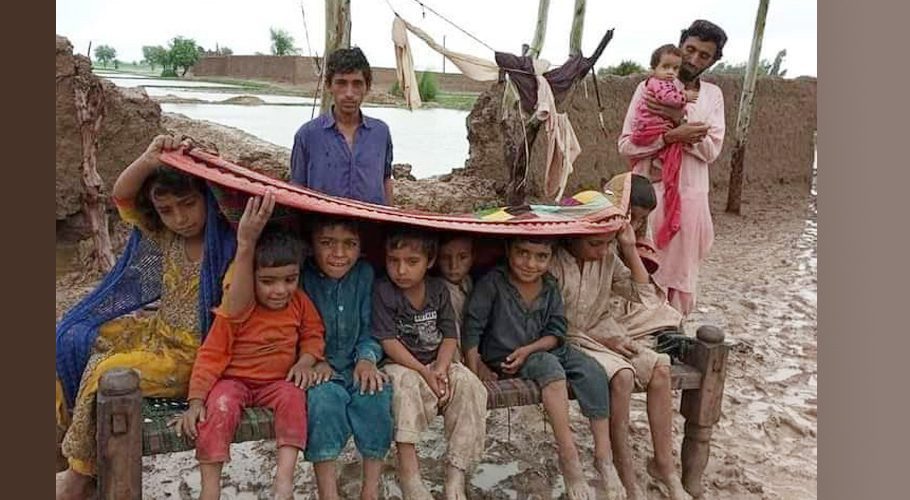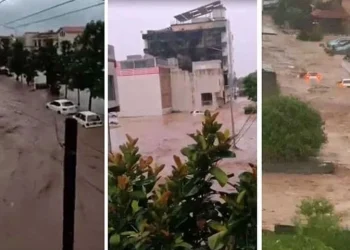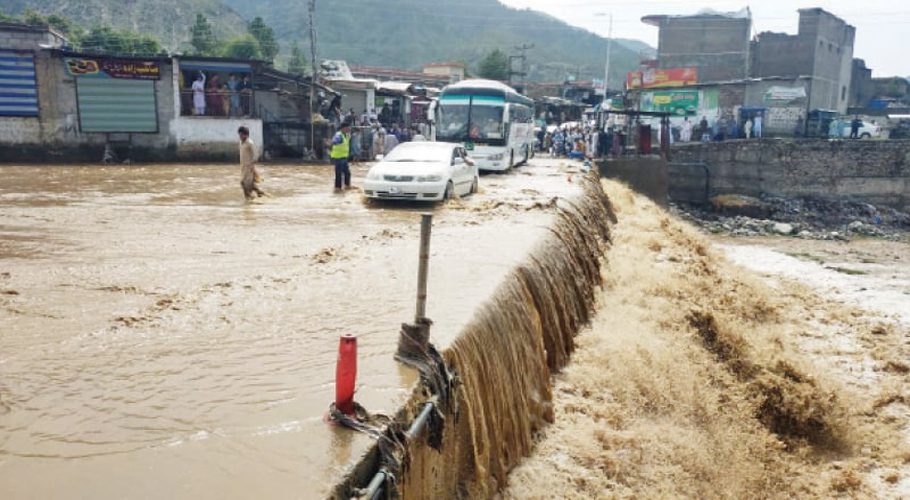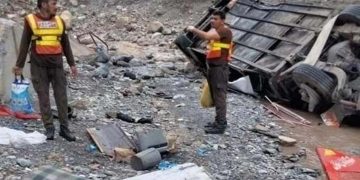ISLAMABAD: Pakistan government has officially declared a ‘national emergency’ in the wake of unprecedented rains and floods that have wreaked havoc across the country, killing over 937 people so far, including 343 children, and left at least 30 million without shelter. While, in Balochistan, on Friday at least 500 people, including women and children, were trapped in flood water after heavy rains and flood torrents have submerged several areas of the province under water.
As per the latest data compiled by the National Disaster Management Authority (NDMA), Sindh reported the highest number of deaths as 306 people lost their lives due to floods and rain-related incidents from June 14 to date.
Balochistan reported 234 deaths whereas Khyber Pakhtunkhwa and Punjab recorded 185 and 165 deaths, respectively. In Azad Jammu and Kashmir, 37 people were killed while nine deaths were reported in the Gilgit-Baltistan region during the current monsoon rains. In the same period Islamabad reported one death.
Meanwhile, on Thursday, a flood torrent coming from the Bolan River broke the Sabri Dam, over a hundred villages are feared to be submerged under water.
The Jadidabad bridge was again swept away in the flood water, leaving the Quetta-Taftan National Highway closed. Meanwhile, the flood torrent washed away the gas pipeline in Bibi Nani, suspending the gas supply to Quetta. Floodwater also raged through areas around Chaman and entered the offices of Customs and the FIA at the Bab-e-Dosti and a village in the Pak-Afghan border area. Many people have been trapped on a road in chest-deep floodwater.
Pakistan received 166.8mm of rain in August, as opposed to the average of 48mm — an increase of 241 per cent. Sindh and Balochistan — the worst-hit regions — witnessed a 784pc and 496pc increase in the monsoon deluge, respectively, according to the NDMA.
Consequently, the abnormal increase in rainfall generated flash floods across the country, particularly in the southern part of Pakistan, which remains inundated at the moment with 23 districts of Sindh being declared “calamity-hit”.
As per the government’s preliminary rapid needs assessment report, at least Rs72.36 billion is required to provide immediate relief to the flood-hit people. In terms of food and instant cash relief, the government requires Rs7.33 billion, for non-food items (NFIs) it needs Rs8.713bn, whereas Rs1.627bn are required for health-related expenses.
The government also requires Rs9.024bn to compensate the loss of cattle as a result of rain-induced floods while the machinery and related equipment required for the relief efforts would cost Rs4.646bn, as per the initial assessment. Meanwhile, in order to rebuild at least 82,000 houses damaged in the deluge would cost Rs41 billion i.e. Rs50,000 per house.
Pakistan has urged the international community and philanthropists to help with relief efforts as it struggles to cope with the aftermath of torrential rains that triggered massive floods, killing more than 900 people.
According to the United Nations Office for Coordination of Humanitarian Affairs (OCHA), heavy monsoon rainfall and floods have affected some 2.3 million people in Pakistan since mid-June, destroying at least 95,350 houses and damaging a further 224,100.
Sindh and Balochistan are the two most affected provinces. More than 504,000 livestock have been killed, nearly all of them in Balochistan, while damage to nearly 3,000 km of roads and 129 bridges have impeded movement around flood-affected areas.





































